Living Data
Science Art & Talks
The experiential process of observation and reflection is key to art and science
and is an essential component in understanding interdependence
of all species and ecosystems, terrestrial and aquatic.
Paul Fletcher Animator
Science Art & Talks
Living Data Program for the 2013 Ultimo Science Festival, Sydney, September 12-21.
Algae Data Animated soundscape by Paul Fletcher with Jennifer Clark
The algae known as Neptune's necklace is experiencing increasingly variable temperatures.
Numeric data are exchanged for sounds and set to animation to express responses of the algae.
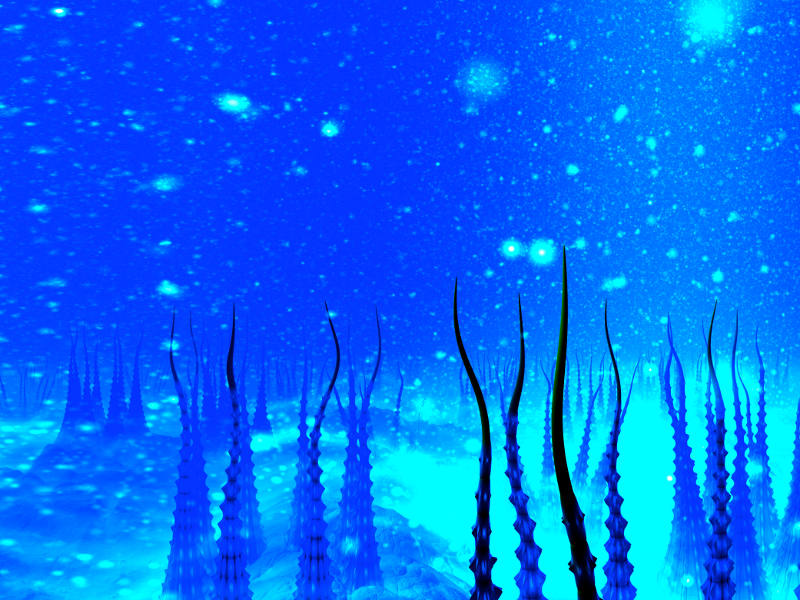
Still from the animation Sea Sound Landscape
by Paul Fletcher
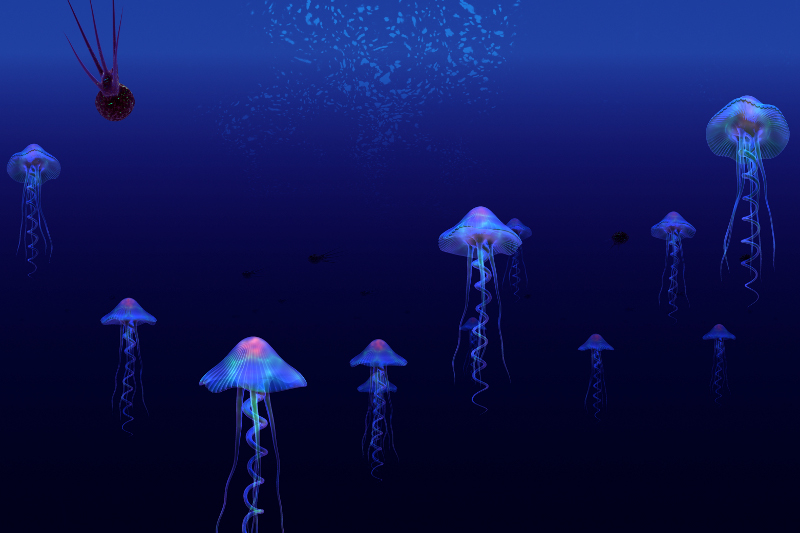
Still from the animation Spiraloid Jelly Fish
by Paul Fletcher
ALGAE DATA MUSIC: PEARL BEACH TEMPERATURE VARIATION IN TIDES (and ocean sub-habitat) Animation and Music by Paul Fletcher with data from Jennifer Clark
The experiential process of observation and reflection is key to art and science and is an essential component in understanding interdependence of all species and ecosystems, terrestrial and aquatic.
This work began by creating music that mapped musical frequencies and sounds to line graphs generated from the spreadsheets of numeric temperature data sets. The music evolved to combine objective measurement and subjective responses to change. The results are of interest already but are only the beginnings of many more translations and explorations still to do.
I use animation and sound to interpret climate change data. Data include numeric records, sketches, photos, videos and Email conversations. Scientific data are provided by Jennifer Clark,a PhD Candidate and member of the Plant Functional Biology & Climate Change Cluster, University of Technology, Sydney. Jennifer provided Excel spread sheets with numbers that record differences in sea temperature at different tidal heights within the intertidal zone and in different parts of an algae plant structure. The meaning of this piece can be found through personal observation and reflection upon it.
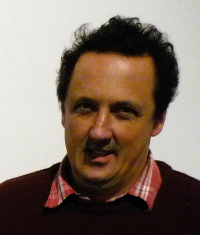
Paul Fletcher
I am a Media Art practitioner and teacher. Using analog and digital production technologies, I have produced many short films, public space projections and installations, soundtrack compositions, music and animation performances. Since 2000 I have been a Lecturer in Animation at the Victorian College of the Arts School of Film & Television, University of Melbourne. My knowledge of the natural landscape has deepened through a lifetime of training and professional practice in Traditional Horticulture, Organic and Permaculture systems, including running a small scale nursery, education and landscaping business, Simply Edible Gardens.
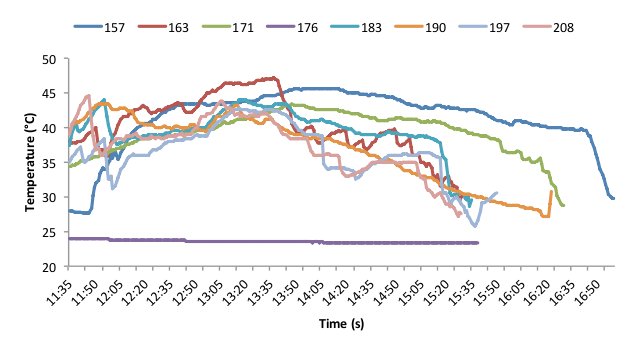
Graph by Jennifer Clark that plots data gleaned from Pearl Beach.
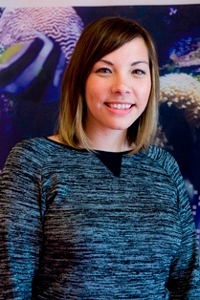
Jennifer Clark 2012
My PhD research involves investigating how climate change will effect the resilience of an intertidal macroalgae (or seaweed) to increasing temperatures. This particular seaweed is Hormosira banskii, commonly known as Neptune's necklance. This is a major habitat former which creates ecosystems for many intertidal organisms (much like coral reefs and rainforests) and is found in most temperate intertidal rock platforms. I am interested in how the underlying genetics and gene flow as well as physiology of this seaweed will allow it to persist in warming climates. One part of my project involves looking at temperatures within the seaweed (tissue temperature) as well as air temperatures within its natural habitat to determine whether different morphs (ecotypes) of the seaweed conger advantages to relieve temperature and desiccation stress.
This animation may be screened simultaneously in The Muse and the Data Atrium (level 3, Building 4, UTS) as part of this series:
Notes for exhibition designers:
Algae Data, by Paul Fletcher with Jennifer Clark; Time Sense, by Takuya Suzuki; Forests of the Sea by Malou Zuiedema.
To evaluate how reciprocity works in Living Data and how our program could be improved, I ask contributors,
What do you most value about our work?
What have you contributed?
How have you benefited?
How could our program be improved?
Paul Fletcher, Animator,Lecturer, Victorian College of the Arts
What do you most value about our work?
Interaction with other artists, researchers, scientists, educationalists (academics) and their respective communities. The ability to even carry out a major part of this remotely, to have a formal and informal place for my work in context of shared work and others work and research and the feeling of added worth and benefit from finding a receptive home of shared interest and actions.
What have you contributed?
Some ideas on ways of working with sound and animation, an actual animation with sound for projection and online viewing that responds to scientific data on, and alerts people to, observing and thinking about the impact of even tiny temperature changes in ocean surface, depths and plant material.
How have you benefited?
Increased actual awareness myself of the amazing complexity of oceanic ecosystems from which we once evolved from and from which we most importantly are totally dependent on for sustaining our life on earth. And the fact that oceans at least as much as forests seem important indicators of climate change, and its affects. Another benefit is new ideas for interacting with science and scientists in meaningful ways. Increased awareness of the need for and strategies for the importance of breaking down narrow discipline based tunnel vision that can occur in specialized areas of practice and research if kept in isolation .
How could the Living Data program be improved?
Unfortunately I could not attend the actual show in person which would be a much more powerful experience than the remote and static documentation. Maybe build on the already established web of interconnected relationships to make ongoing staggered festivals in different states and nations/countries to increase the overall impact and reach and increased value of work already done. I like the idea of creating satellite exhibitions in different states and even some sort of international links.
In conversation with Simon Pockley at the Muse exhibition, we come up with Principles for Living Data:
True to the science
Clear in language
Attractive to the senses
The following week I visit Paul in Melbourne. Paul expresses reservations about these and later writes,
I don't feel completely comfortable trying to sum up underlying principles in a few specific words that can become slogans and misused or misinterpreted. I would for instance not want "true to the science" to be misconstrued or narrowly focused on mathematical and statistical coverage at the expense of the power of, experiential understandings, mystery, emotions, and puzzlement that may actually communicate, affirm or challenge, for instance, powerful unconscious belief systems and previously held models of understanding. For me this could perhaps be better expressed as responding to truths revealed in science, acting in the spirit of scientific discovery/observation/reflection/questioning... but I soon get tied up in these words too.
Clear in Language - more important for the artwork to be clear in its integrity , distinctive voice and language in terms of often seemingly abstract felt experience, tactile, kinetic, visual, musical and so on - this "clear language" could appear very abstract and not even particularly be laying out a particular narrative yet speak directly to, or even better, be in dialogue with our thoughts, memories, experiences and beliefs and thus possibly eventuate in more action than apparently "clear language" that has the directness and clarity of a mathematical sum yet for may leave many people confused, cold and or bored ( eg. may not engage any senses.)
Which leads me to "Attractive to the senses"... I worry that this could be misconstrued as having to be pretty ... not that there is anything wrong or undesirable about beauty BUT not everything may always appear attractive to everyone, not all facts and science discoveries are going to be beautiful so again it is more about ENGAGEMENT and DIALOGUE with SENSES, with SCIENCE and our Multiple Literacies (text,visual,audio,kinetic, haptic, etc in no defined hierarchy).
I agree with Paul's reservations and change the 'underlying principles'. Living Data develops and presents visualisations that are Engaging to the senses, True to the science, Clear in language.
I also expand on the definitions in 'About' Living Data to include reference to the symbolic power of primal forms:
DATA: Information output by a sensing device or organ that includes both useful and irrelevant information and must be processed to be meaningful. Ref. Merriam Webster dictionary
PRIMAL FORMS can convey implicit meanings to scientific data that give them dual resonnance: data can be recognised as both scientific information and expressions of sensory connection. Ref. Roberts. Antarctic Animation2010 PhD thesis
CONNECTIVITY: [E]nvironmental values derive from a sense of connectivity with nature. Ref. Dutcher et al. Connectivity With Nature as a Measure of Environmental Values Environment and Behavior July 2007 vol. 39 no. 4 474-493
The cnversation continues. Paul Emails (Wed Oct 23)
I think it is all good and clear but personally I still have trouble with "true to the science" sounds too dogmatic/religious and one sided rather than interacting with even perhaps learning from and or contributing to each other..? and I still have issue with clear in language - too easily being mistaken for simplistic/ already proven-familiar etc for me I would prefer something like:
Engaging the senses
Engaging with the science
Articulate and sensitive communication
BUT that might just suit my particular aims and mantra/s?
I especially like the pertinent and useful themes that serve both unifiying and diversification in
Data
Primal Forms
Connectivity
Congratulations on the newspaper coverage, I hope the project continues to build momentum and spawns a sequence of geographically and time separated events, responses and actions,
cheers
Paul
Hi Paul,
Thanks for this. Words, like images, are complex things, however
simple in appearance. They are open to interpretation.
I do not support a 'one-sided' view that privileges science over art.
The two-way conversation is important, as scientist Martina Doblin
agrees:
http://www.livingdata.net.au/content/DataExchange/MartinaDoblin/MartinaDoblinInterview.php
I see dangers in privileging unfounded beliefs over science. For example the belief in unlimited resources and that some god will provide for those who believe in him or her, so we don't need to think or concern ourselves with nature's laws.











